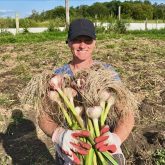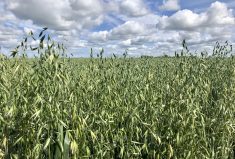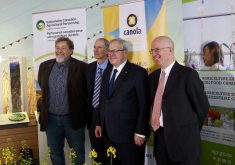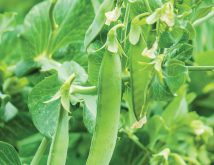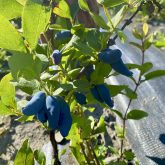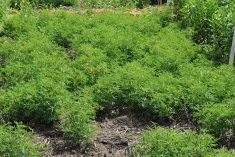4 -H is looking to urban areas and the Aboriginal community to replenish its depleted membership, the chief executive officer of the Canadian 4-H Council told the Commons agriculture committee May 5.
Mike Nowosad said 4-H is reaching out into urban centres to teach people about agriculture because there’s interest there. “We’re going to be introducing the business development opportunities on-farm mentorship program in 2011, which is a partnership with Canada’s outstanding young farmers, where young people interested in going into agriculture will spend two weeks on the farms of some of the winners of Canada’s outstanding young farmers to learn how it’s done.
Read Also

Manitoba sclerotinia picture mixed for 2025
Variations in weather and crop development in this year’s Manitoba canola fields make blanket sclerotinia outlooks hard to pin down
“For the last three years we’ve been running an Aboriginal 4-H program,” he continued. Aboriginal youth is one of the fastest-growing components of the Canadian population. “We see urban cent res and we see the Aboriginal youth community as markets for 4-H.”
EXPANDED PARTNERSHIPS
4-H is also looking into expanded partnerships with the deans of agriculture and veter inary medicine that could see 4-H leaders qualify for university credits, he added.
“We see ourselves as the apprenticeship for young farmers, basically, and that our members will become Canada’s outstanding young farmers or members of the Canadian Young Farmers Forum,” he noted.
The outreach to urban areas could include a national strategy to partner with Agriculture in the Classroom, he said. “We see that as a critical element in respect to teaching kids about agriculture. It’s impor tant that we’re communicating on Twitter, Facebook, etc.”
In addition to the usual activities such as showing livestock, 4-H is considering a program for older teenagers that would include starting up a farm, writing a business plan, sharing different market ideas and talking to professionals, he said. “These are some examples that could cover technological advancements such as genomics, or get into advancements in specific commodity production such as vegetable growing, beef production, sheep production, bioenergy production, hemp, corn, etc., transition one market to another, or part time to full time.”
ATTRACTING YOUTH
The federal government should consider what’s needed to attract young people into a career in agriculture, he said. “We think it would be a good idea to develop a new, crisp, clear vision for Canadian agriculture, focused on young people. … The government needs to communicate this vision as well as support programs for beginning farmers using new social marketing technologies.”
Farming needs “to attract and retain a new generation of producers,” he said. “This is becoming more apparent as the number of producers under the age of 35 is declining at a faster rate than in any other age range. In fact, from 2001 to 2006 the number of farm operators under the age of 35 decreased by 25 per cent across Canada. That’s not a good statistic.”
Ashley Knapton, a University of Guelph agriculture student and 4-H member from Almonte, Ont., told the MPs that the most important factor for young farmers is being able to survive financially. The interest is buying local food helps because it “can give producers that edge, that extra amount of money they’re going to make by not selling it to a wholesaler.
“Lots of my neighbours put their produce out on a wagon and they encourage people to come and they’re making more money that way because they reduce the middleman,” she said. “I think it provides a lot more security, we know exactly where our food is coming from and I think we would be able to support ourselves which would be key instead of relying on other countries.”






